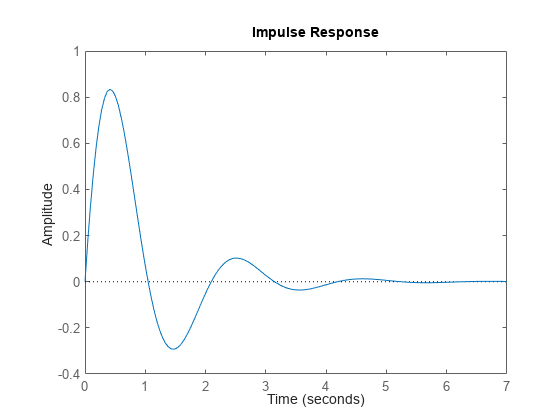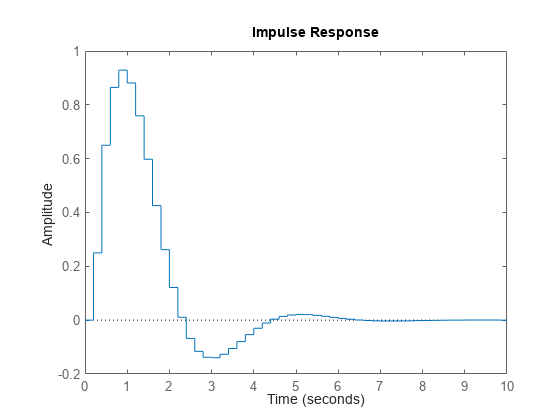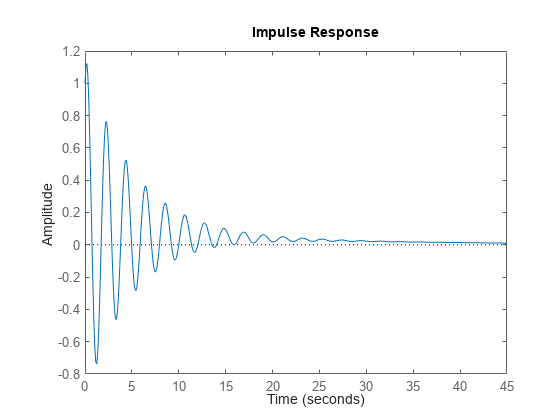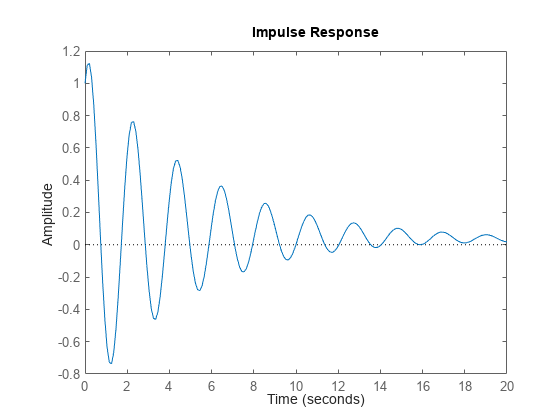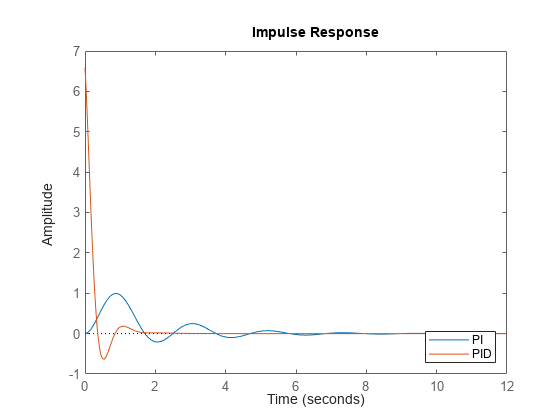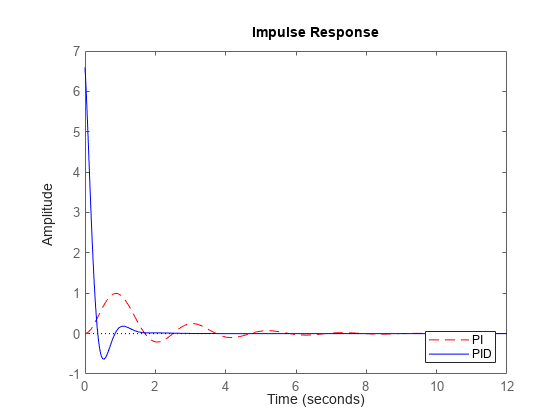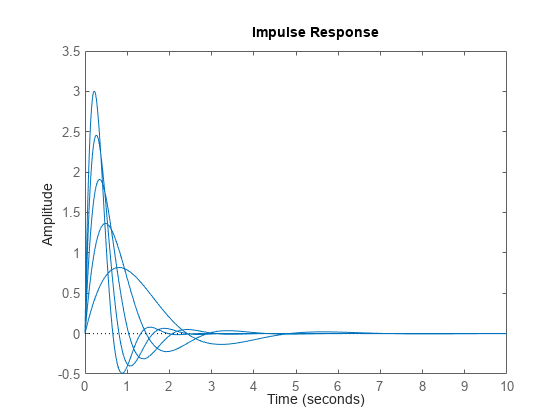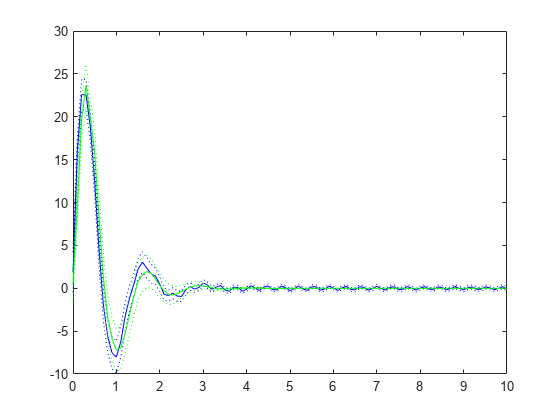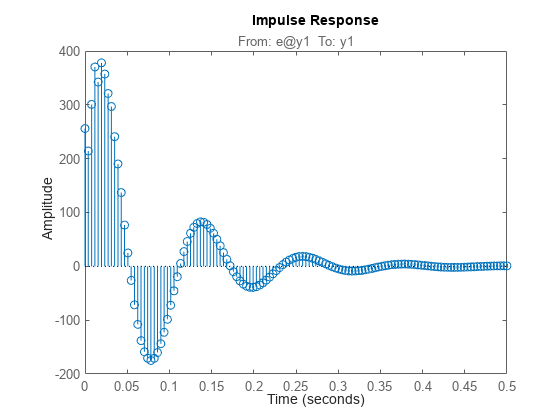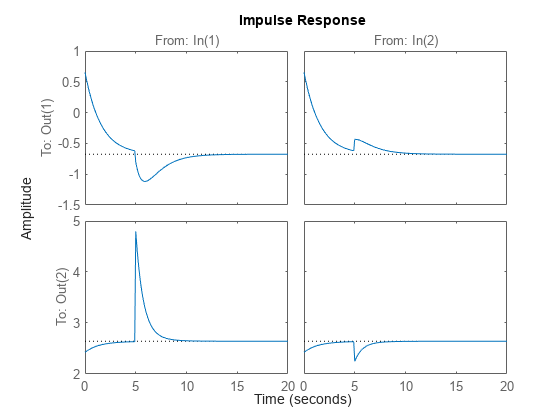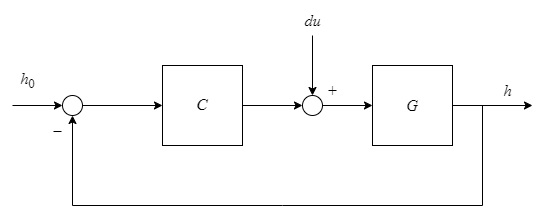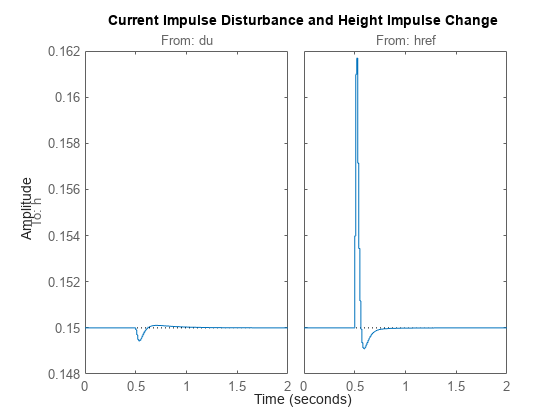impulse
動的システムのインパルス応答プロット、インパルス応答データ
構文
説明
[ は、振幅や入力オフセットなど、インパルス応答を計算するための追加オプションを指定します。y,tOut] = impulse(___,config)RespConfig を使用して、オプション セット config を作成します。
impulse(___) は、前述のすべての入力引数の組み合わせについて、sys のインパルス応答を既定のプロット オプションでプロットします。プロットをさらにカスタマイズするには、impulseplot を使用します。
複数の動的システムの応答を同じプロット上にプロットするには、
sysをモデルのコンマ区切りリストとして指定します。たとえば、impulse(sys1,sys2,sys3)は 3 つのモデルの応答を同じプロット上にプロットします。プロット内の各システムの色、ライン スタイル、およびマーカーを指定するには、システムごとに
LineSpec値を指定します。たとえば、impulse(sys1,LineSpec1,sys2,LineSpec2)は 2 つのモデルをプロットし、それらのプロット スタイルを指定します。LineSpec値の指定の詳細については、impulseplotを参照してください。
例
入力引数
出力引数
制限
ゼロでない行列 D の連続システムのインパルス応答は t = 0 で無限になります。
impulseはこの不連続を無視し、t = 0 におけるより低い連続値 Cb を返します。impulseコマンドは、内部遅延をもつ連続時間モデルでは機能しません。そのようなモデルでは、pade(Control System Toolbox) を使用してむだ時間を近似してから、インパルス応答を計算します。impulseコマンドは、連続時間 LPV モデルについては、暗黙的なパラメーターの軌跡に沿ったシミュレーションをサポートしていません。
ヒント
任意の入力信号へのシステム応答をシミュレーションするには、
lsimを使用します。追加のプロット カスタマイズ オプションが必要な場合は、代わりに
impulseplotを使用します。impulseを使用して作成されたプロットは、複数行のタイトルや、string 配列または文字ベクトルの cell 配列として指定されたラベルをサポートしません。複数行のタイトルやラベルを指定するには、newline文字を含む単一の string を使用します。impulse(sys) title("first line" + newline + "second line");
アルゴリズム
連続時間 LTI モデルは、まず状態空間形式に変換されます。単入力状態空間モデルのインパルス応答
は初期状態が b の自由応答と等価です。
この応答をシミュレーションするため、システムは入力にゼロ次ホールドを使用して離散化されます。サンプル時間は、時間ベクトル t = T0:dt:Tf が指定されている場合を除き、システム ダイナミクスに基づいて自動的に選択されます。そのため、dt がサンプル時間として使用されます。
バージョン履歴
R2006a より前に導入参考
線形システム アナライザー (Control System Toolbox) | step | lsim | impulseest | pade (Control System Toolbox) | impulseplot
